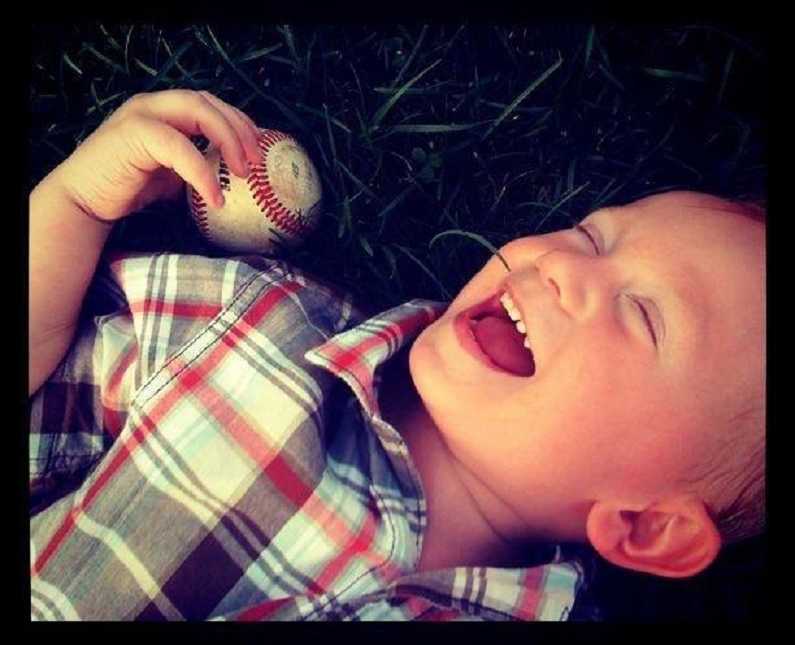“When my son, Jack, was a brand-spanking-new-infant, my mother noticed a fleshy dimple of sorts at the top of his bum, right where his spine and bum met. A first-time mom myself and still very green, I didn’t think anything of it. My mother insisted we bring it to the attention of our pediatrician, and so at Jack’s one-week check-up, I did.
Much to my relief, our wonderful pediatrician assured us that it was probably nothing but if it was still there by the time Jack’s first birthday rolled around, we would need to have an MRI done on it. A neurotic first-time mom, I obsessed, Googled, Googled some more, and then finally realized I had an entire year to wait and I may as well chill out.
Before I knew it, a year had passed and my newborn was no more! At his one-year check-up our pediatrician rechecked the seemingly benign fleshy ‘dimple’ as I had come to call it, and informed me that Jack would, indeed, require an MRI. Before I knew it he had made a call to Children’s Hospital Boston to both a colleague and personal friend (whom happened to be the Chief of Neurosurgery), and we were on our way into Boston. Diagnosed with a tethered spinal cord, we were informed that Jack would require neurosurgery on his spinal cord. A tethered spinal cord is defined as a neurological disorder caused by tissue attachments that limit the movement of the spinal cord within the spinal column. These attachments cause abnormal stretching of the spinal cord. The syndrome is closely associated with spina bifida (which Jack is not afflicted with, thankfully). It is estimated that 20 to 50 percent of children with spinal bifida defects repaired shortly after birth will require surgery (neurosurgery in our son’s non-spina bifida related case) at some point to un-tether the spinal cord. In Jack’s case, his tethered spinal cord was caused by a benign lipoma, a fatty growth at the base of the spine which inhibits free-floating of the spinal cord; thus inhibiting growth (aans.org). I’m not sure if I was numb, sick, in shock, petrified, or all of the above.

The day of Jack’s surgery was, by far, one of the worst of my entire life. While I knew he was in the most capable hands in the world class Boston Children’s Hospital, nothing brought me solace. I spent what felt like an eternity in the family waiting room making frequent runs for the adjacent bathroom to vomit. When the surgeon (the Chief of Neurosurgery, mind you) came out to the waiting room to update us he asked us to join him in a private room. I immediately and instinctively refused. Standing in the middle of the family waiting room, in the presence of other families dealing with their own situations, I refused to move, or rather, I was physically unable to move for fear that entering that private room would ultimately be the place where I was doomed to receive the worst news of my life.
After much reassurance, our esteemed doctor assured me Jack had done great and was resting comfortably and that he simply wanted to be able to speak at length and in detail about the procedure and recovery.
During our four-day stay on the neuro floor at Children’s Hospital Boston I witnessed God’s work. Not only in the swift and amazing recovery of my own child, (who walked out of the car seat and into the house when we brought him home), but everywhere. Jack had two roommates during our brief stay. Both were young children with cancer and both left cancer-free during our stay. To anyone who dare doubt the existence of God in my presence, I counter your dare with a trip to Boston Children’s Hospital, where God is busy working all day.
It’s been eight years since Jack’s surgery and he hasn’t had so much as one complication, thank God. To that I say thank you to our ever caring, dedicated, and compassionate pediatrician Dr. Joseph Asiaf and to the Chief of Neurosurgery at Children’s Hospital Boston, Dr. Scott. You are truly angels among us and we are forever indebted and grateful to you.”

This loving story was submitted to Love What Matters by Katie Logue, 34, of Connecticut. It originally appeared on her blog.
SHARE this story on Facebook to encourage other parents to be vigilant with their children’s checkups.



